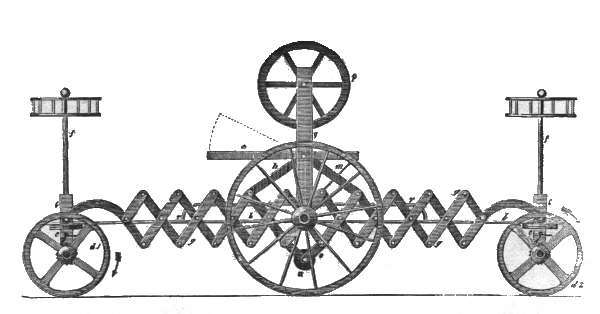Updated: 24 July 2006




Updated: 24 July 2006
  |

|
Above: The lazy-tongs locomotive of Mr Holland: 1827.
|
The operation was intended to be as follows: The wheels at each end can slide horizontally with respect to the central assembly. Each is fitted with a ratchet and pawl so it can only rotate in the direction for forward travel. The weight n at centre bottom is caused to rise and fall, and the lazy-tongs contract and expand, alternately pushing and pulling the vehicle forward against whichever wheel is stopped by its pawls. The wheel at the top is a flywheel "to equalise the motion" though quite how it is connected to the rest of the mechanism is unclear.
Obviously falling weights won't get you very far, and one can only assume that this bizarre piece of mechanism was intended to be powered by steam. To put the date in perspective, the famous Locomotion No. 1 was built by Robert Stephenson and Company in 1825, and it pulled the first train on the Stockton and Darlington Railway on September 27, 1825. Richard Trevithick built a working full-size steam road carriage as early as 1801.



